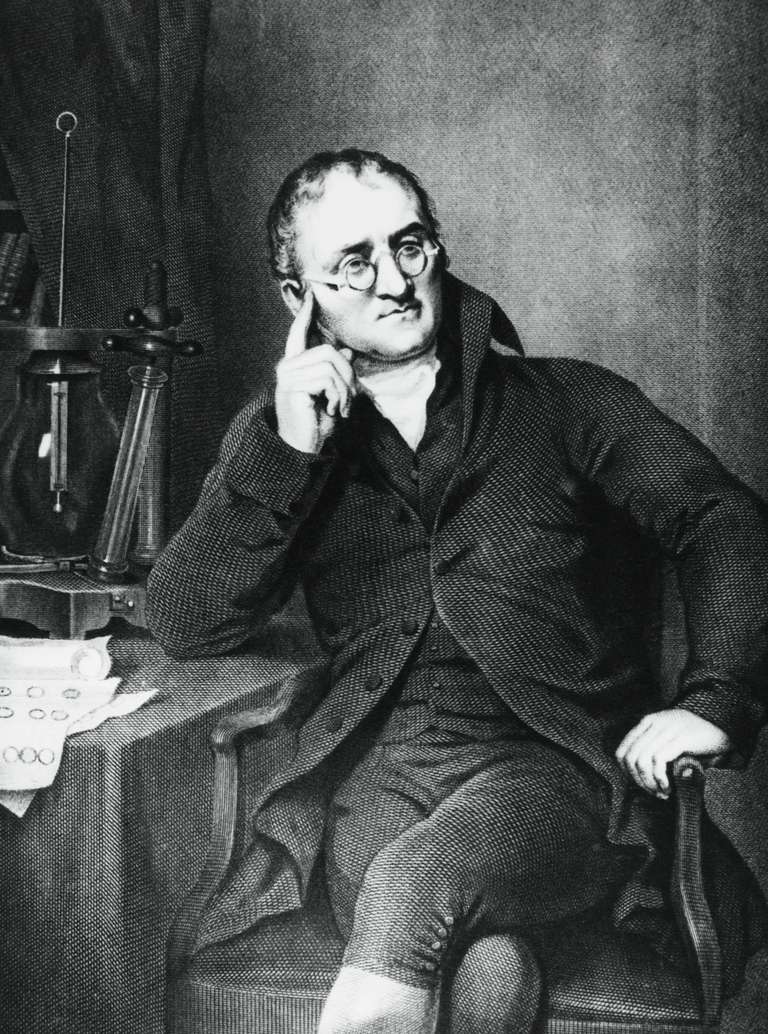Home > Sections > Famous Scientists > John Dalton
John Dalton
Life Details
Born: 5th or 6th September, 1766. Died: 27th July 1844.
Introduction
An English meteorologist, chemist and a pioneer of the modern atomic theory, John Dalton was a schoolteacher that was able to calculate atomic weights and more.
Early Life
Born into a Quaker family, Dalton was primarily a teacher and public lecturer. He was born colour-blind, along with his brother. His later works centred around this.
Dalton left school at 12, and taught at the same place to teach others. When he was 14, he left to become a farmhand, but soon returned to teaching as an assistant at a Quaker boarding school in Kendal. Within 4 years, he became principal. He stayed there until 1793 where he became a math and philosophy tutor at the New College in Manchester.
Noted Works
Color Blindness
Researching colour blindness, of which he and his brother both had, he figured that the condition must be hereditary. His theory became true when a genetic analysis of his eye tissue revealed that he had no green photoreceptor. Today, the condition of red-green colour blindness is still called "Daltonism".
Law of Partial Pressures
Dalton created a Law of Partial Pressures. His theory that the chemical makeup of air was not a chemical solvent, but that it was mechanical. A system of small individual particles that used pressure that was applied to each gas independently.
These experiments led Dalton to the discovery that the total pressure of a mixture of gases amounted to the sum of the partial pressures that each individual gas exerted while occupying the same space.
Atomic Theory
Working with gases eventually led Dalton to assert that every form of matter (solid, liquid or gas) was also made up of small individual particles. He defined each particle as "atomos" or "atoms". He then created the first chart of atomic weights in 1803, writing for the Manchester Literary and Philosophical Society.
A book published in 1808 called A New System of Chemical Philosophy, was a further insight into the atomic weights of particles. Dalton was the first scientist to explain the behaviour of atoms in terms of measurement of weight. He also noted that atoms could not be created or destroyed.
Later Life & Death
Between 1817 to the day he died, Dalton was president of the Manchester Literary and Philosophical Society. In 1832, he accepted, albeit begrudgingly, an honorary Doctorate of Science degree from the prestigious Oxford University. In ironic fashion, the robe he had to wear was red.
Dalton stayed away from the public eye in later life, and turned down opportunities and positions that would put him in the spotlight. In 1837 he had a stroke and trouble with his speech for his remaining life. He died a few years later in 1844.






